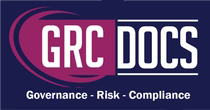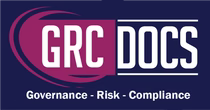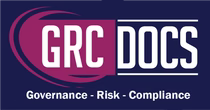NIST 800-53 Policy Templates: Complete Compliance Guide
Introduction
Navigating the world of cybersecurity can be daunting, especially when it comes to ensuring compliance with standards like NIST 800-53. This framework is essential for federal information systems and organizations, providing a catalog of security and privacy controls to protect information systems. In this guide, we'll delve into NIST 800-53 policy templates, how they can help you achieve compliance, and why they're crucial for your organization's security posture. The National Institute of Standards and Technology (NIST) established the NIST 800-53 framework to provide a comprehensive set of controls for federal information systems. These controls are designed to ensure systems and organizations can manage risks effectively, protecting the confidentiality, integrity, and availability of sensitive information.

Why Use NIST 800-53 Policy Templates?
Creating policies from scratch can be a time-consuming and complex process. That's where NIST 800-53 policy templates come in handy. These templates are pre-structured documents that align with the NIST framework, helping organizations implement security controls more efficiently.
Benefits of Using Policy Templates
-
Time-Saving: With pre-built templates, your team can avoid the tedious task of drafting policies from the ground up, allowing more time to focus on other critical security tasks.
-
Consistency: Templates ensure that all policies are consistent with the NIST guidelines, reducing the risk of discrepancies or gaps in your security posture.
-
Customization: While templates provide a solid foundation, they can be customized to meet the unique needs of your organization, ensuring that all specific security requirements are addressed.
Key Components Of A NIST 800-53 Policy Template
Each NIST 800-53 policy template typically includes several key components that align with the framework's controls. Here's a breakdown of what you might find in a typical template:
-
Introduction: This section outlines the purpose and scope of the policy, providing context for its implementation within your organization. It sets the stage for why the policy is necessary and what it aims to achieve in terms of security controls.
-
Roles and Responsibilities: Clearly defining roles and responsibilities is crucial. This section specifies who within the organization is responsible for implementing, maintaining, and enforcing the policy. It helps ensure accountability and clarity across the team.
-
Policy Statements: Policy statements are the heart of any template. They provide detailed guidance on the specific security controls that need to be implemented. Each statement aligns with a control family from the NIST 800-53 framework, such as access control or incident response.
-
Compliance and Enforcement: To ensure policies are followed, this section outlines the measures in place to monitor compliance. It may include regular audits, assessments, and the potential consequences of non-compliance.
- Review and Update Procedures: Security is an ever-evolving field, and policies must adapt accordingly. This section specifies how often the policy will be reviewed and updated to remain relevant and effective.
Implementing NIST 800-53 Policy Templates
Successfully implementing NIST 800-53 policy templates involves several steps to ensure they are integrated effectively into your organization's security practices.
-
Step 1: Conduct a Risk Assessment: Before implementing any policy, it's essential to understand the specific risks your organization faces. Conducting a thorough risk assessment helps identify vulnerabilities and prioritize which controls need to be addressed immediately.
-
Step 2: Select Appropriate Controls: Based on the risk assessment, select the appropriate controls from the NIST 800-53 framework. Use the policy templates to draft policies that address these controls, ensuring they align with your organization's unique security requirements.
-
Step 3: Customize Templates: While templates provide a solid foundation, customization is key. Tailor the templates to fit your organization's specific needs, making adjustments where necessary to ensure all unique security challenges are addressed.
-
Step 4: Train Your Team: Educating your team on the importance of the policies and how to implement them is crucial. Regular training sessions help ensure everyone understands their roles and responsibilities, fostering a culture of security awareness.
- Step 5: Monitor and Review: Regular monitoring and reviews are essential to ensure policies remain effective. Schedule regular audits and assessments to identify any areas for improvement and update policies as needed.
Challenges And Solutions
Implementing NIST 800-53 policy templates can come with its share of challenges. Here are some common obstacles and solutions to help you overcome them.
-
Challenge: Resistance to Change; Change can be difficult, especially when it involves new policies and procedures. Overcome resistance by involving key stakeholders in the policy development process and communicating the benefits of compliance.
-
Challenge: Keeping Up with Updates: NIST updates its guidelines regularly to reflect new security challenges. Stay informed by subscribing to NIST updates and scheduling regular policy reviews to ensure compliance with the latest standards.
- Challenge: Resource Constraints: Limited resources can make it challenging to implement comprehensive policies. Prioritize critical controls and leverage technology to automate as much of the process as possible, freeing up resources for other tasks.
Conclusion
NIST 800-53 policy templates offer a streamlined approach to implementing robust security controls within your organization. By understanding the framework, utilizing templates, and following best practices for implementation, you can enhance your security posture and ensure compliance with federal standards. Remember, security is an ongoing process, and regular reviews and updates are crucial to maintaining an effective security strategy. With the right tools and strategies in place, your organization can navigate the complexities of cybersecurity with confidence.






